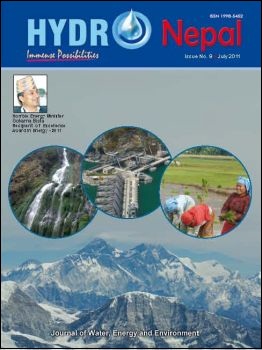India’s Nuclear Power Development and Nepal’s Hydropower after the Fukushima Accident
DOI:
https://doi.org/10.3126/hn.v9i0.7065Keywords:
Nuclear power, hydropower, Fukushima incident, India, NepalAbstract
Abstract: When President George W. Bush and Indian Prime Minister Manmohan Singh signed the Indo-US Nuclear Declaration in 2005 and subsequently the Nuclear Suppliers Group waived off the embargo on India in 2008, there were tremors in Nepal that her hydropower would be displaced by India’s nuclear power plants. Nepal’s two quick hydropower plans ? 10,000MW in 10 Years and 25,000MW in 20 Years ? may be interpreted as indication of that tremor. But is India really banking on Nepal’s so called ‘huge’ hydropower potential? In a mere two decades, by 2032, India is planning to have 63,000MW of installed nuclear power. Will the recent Fukushima nuclear accident in Japan have any impact on her ambitious nuclear power development? To understand the issues, this article deals with India’s interesting nuclear history that had to innovate and indigenize when the ‘embargo’ was imposed after the 1974 Pokhran nuclear explosion. The article argues that the fast developing India is after Nepal’s stored water, that valuable resource getting increasingly scarce. Hydropower for her is a mere by-product, perhaps a bonus if she can get it at a cheap rate!
DOI: http://dx.doi.org/10.3126/hn.v9i0.7065
Hydro Nepal Vol.9 July 2011 15-19
Downloads
Downloads
Published
How to Cite
Issue
Section
License
The copyright of the articles and papers published is held by HYDRO Nepal Journal.
The views and interpretation in this journal are those of author(s), and HYDRO Nepal does not bear any responsibility for the views expressed by authors in the journal.




